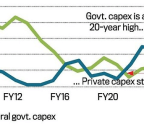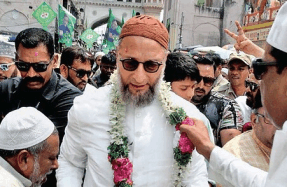

Look at the post-vote counting heat map depicting party-wise victories in saffron and blue on the Election Commission of India’s website, and you encounter a sea of saffron. From Jaora on the Rajasthan border in the west to Chitrangi on the Uttar Pradesh border in the east, one can travel almost a thousand kilometres by road without having to cross a single Congress-held assembly constituency. Likewise, from Dimani up north in the Chambal zone to Multai, abutting Maharashtra, the country’s second-largest state has another 700-odd saffron kilometres. That is what the BJP’s resounding victory for a fifth time in Madhya Pradesh—securing 163 seats compared to the 66 that the Congress has won in the 230-member assembly—looks like on the map.
From being an election where the BJP was said to be fighting 18 years of anti-incumbency, and also one in which there was a clear relegation to the background of its chief minister of 16 long years, Shivraj Singh Chouhan, how did the party manage to make the impossible possible? A lot of it owes to the combination of tactical moves executed by the national and state leadership. But the Congress’s lacklustre campaign further contributed, in equal measure, to the BJP’s stupendous triumph.
Often considered the laboratory of the parent organisation, the Rashtriya Swayamsevak Sangh, MP has always been special for the BJP. And its poll preparations began soon after it saw defeat in Karnataka. Without a concerted plan, the BJP sensed, the battle against anti-incumbency would remain a losing one, continuing the pattern of 2018,deal of autonomy to the chief minister and the state unit to plan the election. This time, it was clear from the outset that the strategies for the election would be drawn up by Union home minister Amit Shah and Prime Minister Narendra Modi, with the latter being the face of the campaign. Based on early feedback from party workers and commissioned surveys, the prospects of victory looked bleak and anti-incumbency was identified as the main reason for it. The party’s longest-serving CM did not enjoy the support of party workers and key leaders any more either.






